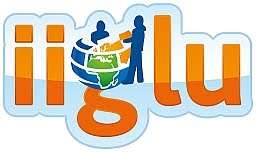There are two main communities for the project - firstly, a community of end users. You will typically be students, researchers or academics in departments such as archaeology, anthropology, computer science, health research or medicine, biology, environmental science and so forth. You will probably have used a web map (e.g. a Google Map) at some point, and may have heard of a Geographical Information System but think that the software is very complicated and that you can't use your data on a map. We hope that the tools developed by this project will give you some ideas about GIS and how you could use it, and make it less scary. We'd love to hear from you with any ideas as to how to do this and how you think you could use maps in your work.
The second community we hope to form is a group of GIS developers who can take our tools and add scenarios and expert information beyond the life of the project. These people will know what a GIS is, and also have web development and database skills. The will, perhaps, make use of the tools we develop for their own teaching, and will also add additional use cases and scenarios to the project.
And finally, who are we? We are a team of four people based at UCL and the University of Portsmouth. Our skills cover GIS, Human-Computer Interaction and Web Development and we are all involved in GIS teaching. In alphabetical order:
Claire Ellul use
 d to be a GIS consultant and is now a Lecturer in GIS at UCL, specialising in spatial databases and web and mobile GIS. She was responsible for the technical development of the Community Maps project, and will oversee technical issues on JISCG3. Claire is Principal Investigator on the project.
d to be a GIS consultant and is now a Lecturer in GIS at UCL, specialising in spatial databases and web and mobile GIS. She was responsible for the technical development of the Community Maps project, and will oversee technical issues on JISCG3. Claire is Principal Investigator on the project.Kate Jones i
 s a Lecturer in Geography at the University of Portsmouth. She specialises in Usability in GIS and GIS and Health. Kate is responsbile for the development of the use-cases/scenarios, making sure we understand our users on the JISCG3 project. Kate is Co-investogator on the project.
s a Lecturer in Geography at the University of Portsmouth. She specialises in Usability in GIS and GIS and Health. Kate is responsbile for the development of the use-cases/scenarios, making sure we understand our users on the JISCG3 project. Kate is Co-investogator on the project.Muki Haklay is a Senior Lecturer in
 GIS at UCL, specialising in Human Computer Interaction (HCI) and Usability in GIS as well as having extensive research expertise in Citizen Science and Community engagement. He will provide HCI expertise to the project.
GIS at UCL, specialising in Human Computer Interaction (HCI) and Usability in GIS as well as having extensive research expertise in Citizen Science and Community engagement. He will provide HCI expertise to the project.
Patrick Weber is a Research Fellow in GIS at UCL. He specialises in spatial and location-based analysis but also has extensive technical expertise with open source GIS, and will be responsible for the technical development of the JISCG3 project.


